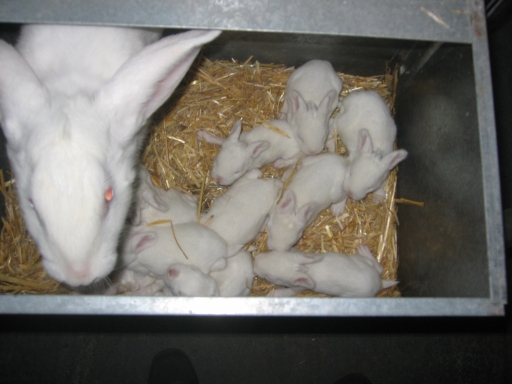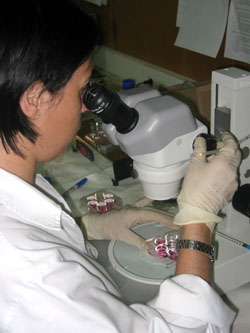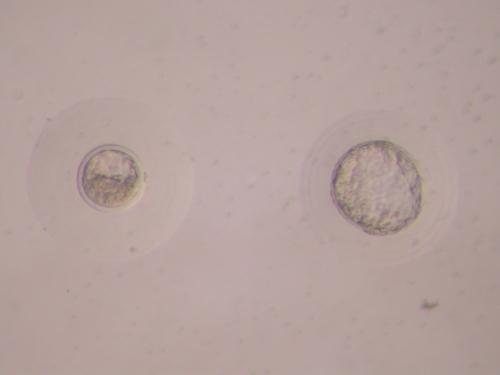TECHNIQUES FOR IMPROVING RABBIT PRODUCTION
|
Description |
This offer is based on the current rabbit production requires the use of a series of methodologies that still know the basic knowledge of reproductive physiology with productive technologies in this species. The processes for the commercial production of rabbits on farms are very demanding for animals since, for example, they overlap gestation and lactation, and they influence the results to be obtained. Therefore, it is necessary to use methods that optimize the reproductive / productive parameters in this species, using for technical techniques novel, experimentally contrasted and capable of being successfully used in the productive systems of this species. The development proposal of the Universidad Complutense de Madrid jointly with the Polytechnic University of Madrid.

Layer of young rabbits
|
How does it work |

Search for embryos
Usually, extensive or semi-intensive systems of management (artificial insemination, weaning between 32 and 47 days, etc.) are carried out in the farms of rabbit production; these procedures are carried out in accordance with the European consumer's concern for the welfare of farm animals. All this demands to study the ideal reproductive and nutritional strategies that allow the adaptation of mothers and rabbits to the conditions of lactation-gestation.
Therefore, the research group intends to solve objectives such as designing and formulating experimental diets adapted to the reproductive physiology of animals that allow reducing energy deficits, procedures that increase the percentage of receptive rabbits at the time of insemination and, In general, the increase of the reproductive parameters (fertility, prolificacy, etc.). In addition, this is intended to simplify the management of the farm, using more extensive production rhythms, reduce the use of hormones and, therefore, reduce production costs.
All this is done using a series of methodologies, whose use is based on the performance of research tasks that improve these techniques. These include:
- Estro synchronization systems.
- Optimization of Artificial Insemination technology in this species.
- Estimation of the animal's body condition to calculate its effective energy reserves.
- Characterization of reproductive parameters in males (seminal test) and females (ovarian and hormonal data).
- Formulation and design of experimental feed.
- Basic research studies that explain and modulate reproductive / productive processes (in vivo and in vitro).
|
Advantages |

Rabbit embryos (blastocysts).
- Overall cost reduction.
- Contrastation of stallions.
- Optimization of the players.
- No use of hormones.
- Improvements in handling and well-being.
- Standardization of techniques.
- Development of specific techniques of Artificial Insemination (IA) and Synchronization of estrus.
- Hormonal determinations related to the production of these animals.
- Determination of the Body Condition of the animals (nutritional status) by means of the Bioimpedance technique (BIA).
|
Where has it been developed |
The Group of Physiology of the Reproduction in Lagomorphs of the UCM is integrated by the researchers of the Physiology (Animal Physiology) and the Animal Production of the Faculty of Veterinary Medicine and counts with the collaboration of the members of the ETSI Agronomos of the UPM.
|
And also |
This offer can be interesting for any company dedicated to rabbit production/reproduction. The research group offers its experience and knowledge to adapt these technologies to each specific company.
|
Contact |
|
© Office for the Transfer of Research Results – UCM |
|
PDF Downloads |
|
Classification |
|
Responsible Researcher |
Pedro Luis Lorenzo González: plorenzo@vet.ucm.es
Department: Physiology (Animal Physiology)
Faculty: Veterinary Medicine


